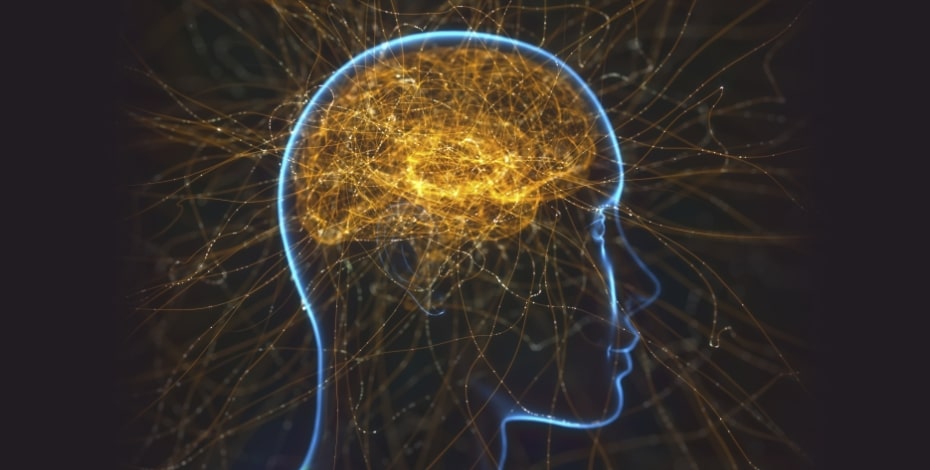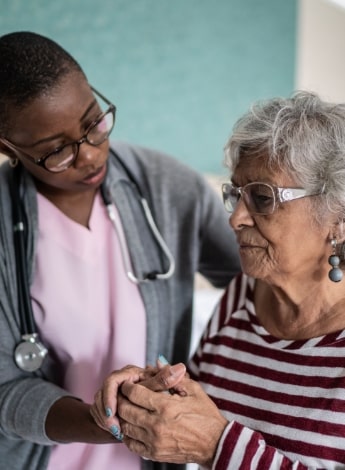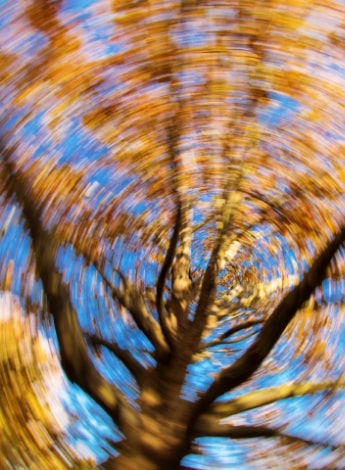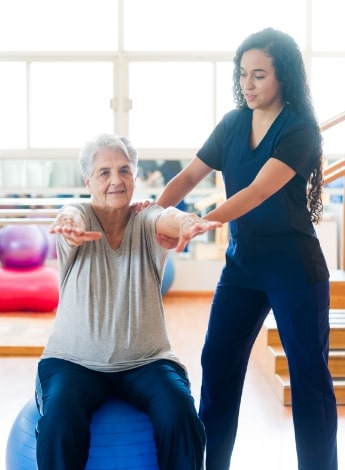
Physiotherapy and central vestibulopathy

Katrina Williams and Christina Cooper from the APA Neurology national group present five discussion points about central vestibulopathy and vestibular rehabilitation treatment options for physiotherapists.
1. Vestibular rehabilitation reduces symptoms of central vestibulopathy and improves function
Vestibular rehabilitation (VR) is a patient-centred physical therapy that promotes gaze stability, improves postural stability and facilitates somatosensory integration in patients with central pathologies causing dizziness (Han et al 2011).
VR is able to reduce imbalance, vertigo, dizziness and motion intolerance and improve function and participation (Han et al 2011, Sulway & Whitney 2016).
It works by reducing the mismatch of vestibular ‘tone’ between the left and right vestibular apparatus and readjusting the ‘gain’ or balance of reflexes modulated by the vestibular system.
Key concepts include restoration, habituation and adaption (Curthoys 2000, Lacour & Bernard-Demanze 2015).
VR has emerged as a useful tool in treating central vestibular dysfunction and dizziness, with evidence supporting reduced dizziness and improved balance and quality of life (Tramontano et al 2021).
Current evidence suggests that it should be provided for a minimum of 20–40 minutes daily, two to five times per week, over four to 12 weeks.
Most studies used VR+ models of delivery for rehabilitation, consisting of gaze stabilisation, eye-movement strategies, balance work and the movement of a patient through space with manipulation of base of support and surface.
This triggers the central integration of vestibular information into multi-sensory processes important for balance and gait (Peterka 2002, Schniepp et al 2017).
2. Patients with Parkinson’s disease show evidence of vestibular dysfunction
Parkinson’s disease (PD) is known to cause significant deterioration in movement control and quality of life and up to 46–68 per cent of people with PD report dizziness (Lee et al 2019, Kwon et al 2020).

Vestibular dysfunction is thought to contribute to the postural instability seen in Parkinson's disease.
It is hypothesised that vestibular dysfunction contributes to postural instability and falls in people with PD, possibly through the neural pathways linking the vestibular apparatus to the cerebrum that pass through the basal ganglia (Smith 2018) or as an interaction with dopaminergic medication (Allcock et al 2006).
However, evidence points to more vestibular dysfunction than simple pathways and medication interactions, with reports of dizziness as a prodromal symptom (Schrag et al 2015).
Vestibular evoked myogenic potentials are reported to be slow or absent in persons with PD (Park & Kang 2021, de Natale et al 2015; Potter-Nerger et al 2015), vestibulo-ocular reflex function tests show consistent reduced function (Reichert et al 1982, Vitale et al 2011), while angular vestibulo-ocular reflex tests report mixed findings of dysfunction, from higher (Lv et al 2017) to normal (Hawkins et al 2022).
There is little evidence currently that VR reduces dizziness or postural/gait symptoms in people with PD.
However, a novel strategy using subthreshold ‘noisy’ galvanic stimulation may positively affect symptoms such as bradykinesia and reactivity (Smith 2018).
3. Vertigo, dizziness and balance issues reported after posterior circulation strokes

Symptoms of acute vestibular syndrome, such as vertigo, dizziness and balance issues, may indicate a posterior circulation stroke.
Vascular events affecting the posterior circulation produce vertigo, dizziness and balance issues because the peripheral vestibular system (inner ear organs and vestibulocochlear nerve) and the central vestibular system (cerebellum and brain stem) are supplied by the posterior circulation.
It is estimated that up to 25 per cent of people presenting with acute vestibular syndrome could be suffering from a posterior circulation stroke (Kattah et al 2009).
Emergency departments now emphasise key assessment criteria known as the HINTS protocol to identify a stroke (head impulse, nystagmus and test of skew) (Kattah et al 2009), with a reported sensitivity of 95.5 per cent and specificity of 71.2 per cent (Krishnan et al 2019).
To improve diagnostic accuracy, other symptoms have been added to this protocol, including hearing loss and postural/gain instability, which means that hearing loss and/or an inability to stabilise upright in sitting or standing independently can be considered hallmarks of a possible central stroke (Kattah 2019).
Hearing loss may be a consequence of an anterior inferior cerebellar artery stroke, given the vascular supply of the anterior inferior cerebellar artery to the inner ear apparatus, while lack of independence in postural alignment often indicates the presence of brain stem/cerebellum involvement (Lee 2009).
4. Migraine associated with vertigo responds to vestibular rehabilitation and lifestyle education and management
Vestibular migraine (VM) is considered the most common cause of recurrent spontaneous vertigo attacks.
Diagnosed according to an internationally accepted consensus statement (Lempert et al 2022), it can cause oculomotor dysfunction during a symptomatic episode and between episodes.
Common findings include gaze-induced nystagmus, saccadic pursuit, dysmetric or slow saccades and, most commonly, central positional nystagmus (Radtke et al 2012).
There is evidence of a female preponderance of 75–94 per cent.
VM can be confused with benign paroxysmal positional vertigo and can comorbidly present with it.
Positional nystagmus is usually persistent (Young et al 2019).
Vestibular function testing such as vestibular evoked myogenic potentials and caloric testing have mixed findings (Baier et al 2009, Kang et al 2016).
Generally, vestibular evoked myogenic potentials fluctuate in people with VM compared to other vestibular pathologies, which show a more consistent output or dysfunction (Dlugaiczyk et al 2020).
Angular vestibulo-ocular reflex findings are variable too, with reports of normal gains in horizontal semicircular canals yet higher gains in vertical semicircular canals (Salmito & Ganança 2021) or lower gains overall (ElSherif et al 2018, Kang et al 2016).
VM can also affect balance, altering sensory processing and integration in a way that has an impact on a person’s spatial perception and postural sway with visual motion (Van Ombergen et al 2015).
5. People with multiple sclerosis respond positively to vestibular rehabilitation
Multiple sclerosis causes demyelisation and axonal degeneration and can affect any region of the central nervous system.

Vestibular rehabilitation improves dizziness, fatigue and postural control in patients with multiple sclerosis.
Up to 60 per cent of people with multiple sclerosis experience dizziness (Marrie et al 2013).
Given the variable placement of the disease process, dizziness can be caused by damage to the central neural pathways (Manago et al 2016, Mostafa et al 2014), the vestibular apparatus (Pula et al 2013) or a combination (Li & Peng 2015), hypothesised as a consequence of M1 microglia infiltration (Fuentes-Santamaría et al 2017, Luo et al 2017).
Vestibular assessment of people with multiple sclerosis reveals dysfunction of vestibular evoked myogenic potentials that is not always noted with changes on MRIs (Di Stadio et al 2019) and reduced vestibulo-ocular reflex cancellation (Cochrane et al 2021), with angular vestibulo-ocular reflex gain findings of mixed results, from no deficits (Garg et al 2018, Heravian Shandiz et al 2021) to reduced (Pavlovic et al 2017).
Abnormal gains were noted in people with brain stem plaques.
Abnormal findings correlate with poorer balance and walking, increased fatigue and reduced participation (Cochrane et al 2021, Garg et al 2018, Loyd et al 2021).
There is strong evidence that VR improves patient-reported dizziness, fatigue and postural control compared to no intervention (Garcia-Munoz et al 2020).
Click here for an infographic poster version of this article.
>> Katrina Williams APAM FACP is an APA Neurological Physiotherapist, a Specialist Neurological Physiotherapist (as awarded by the Australian College of Physiotherapists in 2008), a senior lecturer in physiotherapy in the School of Health and Rehabilitation Sciences at the University of Queensland and a founding faculty member of Vestibular Education Australia.
>> Christina Cooper APAM is a neurological physiotherapist with a particular interest in vestibular rehabilitation. A graduate of Ohio University and certified in Neurological Physical Therapy by the American Board of Physical Therapy Specialities, Christina works in clinical practice at Steps Neurological Therapy Services in Melbourne.
- References
-
Allcock, L. M., Kenny, R. A., & Burn, D. J. (2006, Nov). Clinical phenotype of subjects with Parkinson's disease and orthostatic hypotension: autonomic symptom and demographic comparison. Mov Disord, 21(11), 1851-1855. https://doi.org/10.1002/mds.20996
Baier, B., Stieber, N., & Dieterich, M. (2009, Sep). Vestibular-evoked myogenic potentials in vestibular migraine. J Neurol, 256(9), 1447-1454. https://doi.org/10.1007/s00415-009-5132-4
Cochrane, G. D., Christy, J. B., & Motl, R. W. (2021, Sep 1). Central Vestibular Functions Correlate With Fatigue and Walking Capacity in People With Multiple Sclerosis. Phys Ther, 101(9). https://doi.org/10.1093/ptj/pzab168
Curthoys, I. S. (2000). Vestibular compensation and substitution. Current opinion in neurology, 13(1), 27-30.
de Natale, E. R., Ginatempo, F., Paulus, K. S., Manca, A., Mercante, B., Pes, G. M., Agnetti, V., Tolu, E., & Deriu, F. (2015, Oct). Paired neurophysiological and clinical study of the brainstem at different stages of Parkinson's Disease. Clin Neurophysiol, 126(10), 1871-1878. https://doi.org/10.1016/j.clinph.2014.12.017
Di Stadio, A., Dipietro, L., Ralli, M., Greco, A., Ricci, G., & Bernitsas, E. (2019, Feb). The role of vestibular evoked myogenic potentials in multiple sclerosis-related vertigo. A systematic review of the literature. Mult Scler Relat Disord, 28, 159-164. https://doi.org/10.1016/j.msard.2018.12.031
Dlugaiczyk, J., Habs, M., & Dieterich, M. (2020, Dec). Vestibular evoked myogenic potentials in vestibular migraine and Menière’s disease: cVEMPs make the difference. J Neurol, 267(Suppl 1), 169-180. https://doi.org/10.1007/s00415-020-09902-4
ElSherif, M., Reda, M. I., Saadallah, H., & Mourad, M. (2018, Jun). Video head impulse test (vHIT) in migraine dizziness. J Otol, 13(2), 65-67. https://doi.org/10.1016/j.joto.2017.12.002
Fuentes-Santamaría, V., Alvarado, J. C., Melgar-Rojas, P., Gabaldón-Ull, M. C., Miller, J. M., & Juiz, J. M. (2017). The role of glia in the peripheral and central auditory system following noise overexposure: contribution of TNF-α and IL-1β to the pathogenesis of hearing loss. Frontiers in neuroanatomy, 11, 9.
Garcia-Munoz, C., Cortes-Vega, M. D., Heredia-Rizo, A. M., Martin-Valero, R., Garcia-Bernal, M. I., & Casuso-Holgado, M. J. (2020, Feb 21). Effectiveness of Vestibular Training for Balance and Dizziness Rehabilitation in People with Multiple Sclerosis: A Systematic Review and Meta-Analysis. J Clin Med, 9(2). https://doi.org/10.3390/jcm9020590
Garg, H., Dibble, L. E., Schubert, M. C., Sibthorp, J., Foreman, K. B., & Gappmaier, E. (2018, Nov). Gaze Stability, Dynamic Balance and Participation Deficits in People with Multiple Sclerosis at Fall-Risk. Anat Rec (Hoboken), 301(11), 1852-1860. https://doi.org/10.1002/ar.23852
Hall, C. D., Herdman, S. J., Whitney, S. L., Anson, E. R., Carender, W. J., Hoppes, C. W., Cass, S. P., Christy, J. B., Cohen, H. S., Fife, T. D., Furman, J. M., Shepard, N. T., Clendaniel, R. A., Dishman, J. D., Goebel, J. A., Meldrum, D., Ryan, C., Wallace, R. L., & Woodward, N. J. (2022, Apr 1). Vestibular Rehabilitation for Peripheral Vestibular Hypofunction: An Updated Clinical Practice Guideline From the Academy of Neurologic Physical Therapy of the American Physical Therapy Association. J Neurol Phys Ther, 46(2), 118-177. https://doi.org/10.1097/NPT.0000000000000382
Hall, C. D., Herdman, S. J., Whitney, S. L., Cass, S. P., Clendaniel, R. A., Fife, T. D., Furman, J. M., Getchius, T. S., Goebel, J. A., Shepard, N. T., & Woodhouse, S. N. (2016, Apr). Vestibular Rehabilitation for Peripheral Vestibular Hypofunction: An Evidence-Based Clinical Practice Guideline: FROM THE AMERICAN PHYSICAL THERAPY ASSOCIATION NEUROLOGY SECTION. J Neurol Phys Ther, 40(2), 124-155. https://doi.org/10.1097/NPT.0000000000000120
Han, B. I., Song, H. S., & Kim, J. S. (2011, 12/). Vestibular Rehabilitation Therapy: Review of Indications, Mechanisms, and Key Exercises. J Clin Neurol, 7(4), 184-196. https://doi.org/10.3988/jcn.2011.7.4.184
Heravian Shandiz, J., Jafarzadeh, S., Fathi, H., Foroughipour, M., & Karimpour, M. (2021, Jul-Sep). Vestibulo ocular reflex in multiple sclerosis patients without any optic neuritis. J Optom, 14(3), 282-286. https://doi.org/10.1016/j.optom.2020.07.001
Kang, W. S., Lee, S. H., Yang, C. J., Ahn, J. H., Chung, J. W., & Park, H. J. (2016). Vestibular Function Tests for Vestibular Migraine: Clinical Implication of Video Head Impulse and Caloric Tests. Front Neurol, 7, 166. https://doi.org/10.3389/fneur.2016.00166
Kattah, J. C. (2019, Apr). Update on HINTS Plus, With Discussion of Pitfalls and Pearls. J Neurol Phys Ther, 43 Suppl 2, S42-s45. https://doi.org/10.1097/npt.0000000000000274
Kattah, J. C., Talkad, A. V., Wang, D. Z., Hsieh, Y. H., & Newman-Toker, D. E. (2009, Nov). HINTS to diagnose stroke in the acute vestibular syndrome: three-step bedside oculomotor examination more sensitive than early MRI diffusion-weighted imaging [Comparative Study
Research Support, N.I.H., Extramural
Research Support, U.S. Gov’t, P.H.S.]. Stroke, 40(11), 3504-3510. https://doi.org/10.1161/STROKEAHA.109.551234
Kerber, K. A., Callaghan, B. C., Telian, S. A., Meurer, W. J., Skolarus, L. E., Carender, W., & Burke, J. F. (2017). Dizziness symptom type prevalence and overlap: a US nationally representative survey. The American journal of medicine, 130(12), 1465. e1461-1465. e1469.
Krishnan, K., Bassilious, K., Eriksen, E., Bath, P. M., Sprigg, N., Brækken, S. K., Ihle-Hansen, H., Horn, M. A., & Sandset, E. C. (2019, Sep). Posterior circulation stroke diagnosis using HINTS in patients presenting with acute vestibular syndrome: A systematic review. Eur Stroke J, 4(3), 233-239. https://doi.org/10.1177/2396987319843701
Kwon, K. Y., Park, S., Lee, M., Ju, H., Im, K., Joo, B. E., Lee, K. B., Roh, H., & Ahn, M. Y. (2020, May). Dizziness in patients with early stages of Parkinson's disease: Prevalence, clinical characteristics and implications. Geriatr Gerontol Int, 20(5), 443-447. https://doi.org/10.1111/ggi.13894
Lacour, M., & Bernard-Demanze, L. (2015). Interaction between vestibular compensation mechanisms and vestibular rehabilitation therapy: 10 recommendations for optimal functional recovery. Front Neurol, 5, 285.
Lee, H. (2009, 6/). Neuro-Otological Aspects of Cerebellar Stroke Syndrome. J Clin Neurol, 5(2), 65-73. https://doi.org/10.3988/jcn.2009.5.2.65
Lee, J., Bayarsaikhan, D., Arivazhagan, R., Park, H., Lim, B., Gwak, P., Jeong, G. B., Lee, J., Byun, K., & Lee, B. (2019, Mar 30). CRISPR/Cas9 Edited sRAGE-MSCs Protect Neuronal Death in Parkinsons Disease Model. Int J Stem Cells, 12(1), 114-124. https://doi.org/10.15283/ijsc18110
Lempert, T., Olesen, J., Furman, J., Waterston, J., Seemungal, B., Carey, J., Bisdorff, A., Versino, M., Evers, S., Kheradmand, A., & Newman-Toker, D. (2022). Vestibular migraine: Diagnostic criteria (Update). Journal of Vestibular Research, 32, 1-6. https://doi.org/10.3233/VES-201644
Li, Y., & Peng, B. (2015). Pathogenesis, Diagnosis, and Treatment of Cervical Vertigo Pain Physician July/August 2015; 18: E583-E595. Pain Physician, 18, E583-E595.
Loyd, B. J., Agnew, L., Fangman, A., Thackeray, A., Peterson, D. S., Schubert, M. C., & Dibble, L. (2021, Oct). Characterizing gaze and postural stability deficits in people with multiple sclerosis. Mult Scler Relat Disord, 55, 103205. https://doi.org/10.1016/j.msard.2021.103205
Luo, C., Jian, C., Liao, Y., Huang, Q., Wu, Y., Liu, X., Zou, D., & Wu, Y. (2017). The role of microglia in multiple sclerosis. Neuropsychiatric disease and treatment, 13, 1661.
Manago, M. M., Schenkman, M., Berliner, J., & Hebert, J. R. (2016). Gaze stabilization and dynamic visual acuity in people with multiple sclerosis. J Vestib Res, 26(5-6), 469-477. https://doi.org/10.3233/VES-160593
Marrie, R. A., Cutter, G. R., & Tyry, T. (2013). Substantial burden of dizziness in multiple sclerosis. Multiple Sclerosis and Related Disorders, 2(1), 21-28.
Mostafa, B. E., Kahky, A. O. E., Kader, H. M. A., & Rizk, M. (2014). Central vestibular dysfunction in an otorhinolaryngological vestibular unit: incidence and diagnostic strategy. International archives of otorhinolaryngology, 18, 235-238.
Newman-Toker, D. E., Della Santina, C. C., & Blitz, A. M. (2016). Vertigo and hearing loss. Handb Clin Neurol, 136, 905-921.
Park, J. H., & Kang, S. Y. (2021, Sep 23). Dizziness in Parkinson's disease patients is associated with vestibular function. Sci Rep, 11(1), 18976. https://doi.org/10.1038/s41598-021-98540-5
Pavlovic, I., Ruska, B., Pavicic, T., Krbot Skoric, M., Crnosija, L., Adamec, I., & Habek, M. (2017, May). Video head impulse test can detect brainstem dysfunction in multiple sclerosis. Mult Scler Relat Disord, 14, 68-71. https://doi.org/10.1016/j.msard.2017.04.001
Peterka, R. J. (2002). Sensorimotor integration in human postural control. Journal of neurophysiology, 88(3), 1097-1118.
Pula, J., Newman-Toker, D., & Kattah, J. (2013). Multiple sclerosis as a cause of the acute vestibular syndrome. Journal of Neurology, 260(6), 1649-1654.
Potter-Nerger, M., Govender, S., Deuschl, G., Volkmann, J., & Colebatch, J. G. (2015, Apr). Selective changes of ocular vestibular myogenic potentials in Parkinson's disease. Mov Disord, 30(4), 584-589. https://doi.org/10.1002/mds.26114
Radtke, A., von Brevern, M., Neuhauser, H., Hottenrott, T., & Lempert, T. (2012, Oct 9). Vestibular migraine: long-term follow-up of clinical symptoms and vestibulo-cochlear findings. Neurology, 79(15), 1607-1614. https://doi.org/10.1212/WNL.0b013e31826e264f
Salmito, M. C., & Ganança, F. F. (2021, Nov-Dec). Video head impulse test in vestibular migraine. Braz J Otorhinolaryngol, 87(6), 671-677. https://doi.org/10.1016/j.bjorl.2019.12.009
Schniepp, R., Möhwald, K., & Wuehr, M. (2017). Gait ataxia in humans: vestibular and cerebellar control of dynamic stability. Journal of Neurology, 264(1), 87-92.
Schrag, A., Sauerbier, A., & Chaudhuri, K. R. (2015, Sep 15). New clinical trials for nonmotor manifestations of Parkinson's disease. Mov Disord, 30(11), 1490-1504. https://doi.org/10.1002/mds.26415
Smith, P. F. (2018). Vestibular Functions and Parkinson's Disease. Front Neurol, 9, 1085. https://doi.org/10.3389/fneur.2018.01085
Sulway, S., & Whitney, S. L. (2016). Advances in Vestibular Rehabilitation.
Tehrani, A. S. S., Kattah, J. C., Mantokoudis, G., Pula, J. H., Nair, D., Blitz, A., Ying, S., Hanley, D. F., Zee, D. S., & Newman-Toker, D. E. (2014). Small strokes causing severe vertigo: frequency of false-negative MRIs and nonlacunar mechanisms. Neurology, 83(2), 169-173.
Tramontano, M., Russo, V., Spitoni, G. F., Ciancarelli, I., Paolucci, S., Manzari, L., & Morone, G. (2021, Jul). Efficacy of Vestibular Rehabilitation in Patients With Neurologic Disorders: A Systematic Review. Arch Phys Med Rehabil, 102(7), 1379-1389. https://doi.org/10.1016/j.apmr.2020.11.017
Van Ombergen, A., Van Rompaey, V., Van de Heyning, P., & Wuyts, F. (2015). Vestibular Migraine in an Otolaryngology Clinic: Prevalence, Associated Symptoms, and Prophylactic Medication Effectiveness. Otology & Neurotology, 36(1), 133-138. https://doi.org/10.1097/mao.0000000000000596
Young, A. S., Lechner, C., Bradshaw, A. P., MacDougall, H. G., Black, D. A., Halmagyi, G. M., & Welgampola, M. S. (2019, Jun 11). Capturing acute vertigo: A vestibular event monitor. Neurology, 92(24), e2743-e2753. https://doi.org/10.1212/WNL.0000000000007644 -
© Copyright 2025 by Australian Physiotherapy Association. All rights reserved.





